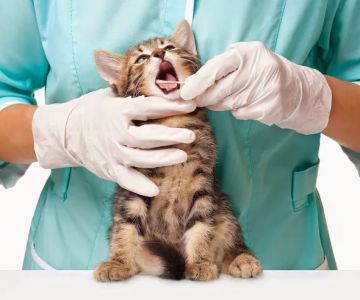How to Recognize Signs of Pet Poisoning: A Guide for Pet Owners
- Understanding Pet Poisoning
- Common Causes of Poisoning in Pets
- Early Signs of Poisoning in Pets
- What to Do if You Suspect Poisoning
- Real-Life Case Study: Pet Poisoning and Quick Action
- Preventing Poisoning in Pets
1. Understanding Pet Poisoning
As a pet owner, one of the scariest things you can face is the possibility that your beloved pet has been poisoned. Pets, especially dogs and cats, are naturally curious creatures. They tend to investigate their environment, which sometimes leads to accidents. Poisoning in pets can be caused by ingesting toxic substances, inhaling fumes, or even absorbing harmful chemicals through their skin. Over the years, I’ve learned just how important it is to recognize the signs of poisoning early to ensure prompt treatment and save a pet's life.
In this article, I’ll share valuable information on how to recognize the signs of pet poisoning, what to do if you suspect your pet has been poisoned, and steps you can take to prevent it from happening in the first place. I’ll also share a real-life story of a pet that was saved thanks to quick action, providing you with the knowledge you need to act swiftly in an emergency.
2. Common Causes of Poisoning in Pets
Poisoning can occur in a variety of ways, but the most common causes involve substances that pets are exposed to in their daily lives. While pets can ingest harmful substances when they’re outside, there are also many dangerous items that can be found inside the home. In my experience, the most frequent causes of poisoning in pets are:
- Household chemicals: Cleaning products, pesticides, and antifreeze are some of the most dangerous chemicals pets can ingest. These items are often found around the house or garage, and pets may be drawn to them due to their smell or appearance.
- Plants: Certain plants are toxic to pets if consumed. For example, lilies are dangerous to cats, and dogs are often attracted to chewing on plants like ivy or mushrooms, which can be harmful.
- Human foods: Many foods that are safe for humans can be toxic to pets. Chocolate, grapes, raisins, onions, and garlic are common foods that can cause poisoning in pets, even in small amounts.
- Medications: Pets may accidentally ingest human medications that are not meant for them. Even common over-the-counter pain relievers, such as ibuprofen, can be fatal if consumed by pets.
- Insects and rodents: Ingesting insects or rodents that have been poisoned can also lead to poisoning in pets, especially in outdoor environments.
3. Early Signs of Poisoning in Pets
Recognizing the signs of poisoning in pets early is crucial for getting them the help they need. When my dog, Max, ate something he shouldn’t have, I had to act fast. Knowing what to look for helped me respond quickly. Here are some early signs of poisoning that pet owners should be aware of:
- Vomiting and Diarrhea: One of the first signs that your pet may have ingested something toxic is vomiting or diarrhea. If you notice these symptoms, especially if they occur suddenly and repeatedly, poisoning could be the cause.
- Lethargy or Weakness: Poisoned pets often feel weak or lethargic. If your pet seems unusually tired, disoriented, or unwilling to move, it could be a sign of poisoning.
- Drooling or Foaming at the Mouth: Excessive drooling or foaming at the mouth is another common symptom of poisoning. This could indicate that your pet has ingested something toxic or is having a reaction to a harmful substance.
- Seizures or Tremors: In severe cases, poisoning can cause seizures or muscle tremors. If your pet is shaking uncontrollably, it’s important to seek veterinary care immediately.
- Unusual Behavior: Poisoning can affect your pet’s behavior. If your pet is acting strangely, such as becoming more aggressive, confused, or excessively thirsty, this could indicate a poisoning incident.
4. What to Do if You Suspect Poisoning
If you suspect your pet has been poisoned, it’s crucial to act quickly. Time is of the essence when it comes to poisoning, and the sooner you seek help, the better the chances of a full recovery. Here’s what I did when Max started showing signs of poisoning:
- Stay calm and assess the situation: First, try to determine what your pet may have ingested. Check the area where they were and look for any potential sources of poison, such as open containers or plants. This will help your vet know what they’re dealing with.
- Call your veterinarian or an emergency animal clinic: Even if you’re unsure whether it’s a case of poisoning, it’s better to be safe. Call your vet or an emergency clinic immediately and explain the symptoms. They can give you instructions on what to do next.
- Follow the vet’s instructions: Your vet may recommend inducing vomiting or bringing your pet in for treatment right away. Do not attempt to treat your pet without professional guidance, as some methods can be harmful.
5. Real-Life Case Study: Pet Poisoning and Quick Action
A close friend of mine had a terrifying experience when her cat, Felix, ingested a toxic plant. She didn’t notice the symptoms at first, but Felix became lethargic and stopped eating. Fortunately, she recognized that something was wrong and took him to the vet. The veterinarian was able to administer treatment and prevent long-term damage, thanks to the quick action my friend took. Felix made a full recovery, but it was a reminder of how important it is to be aware of potential hazards and to act quickly in case of poisoning.
6. Preventing Poisoning in Pets
While it’s important to know how to recognize and respond to signs of poisoning, prevention is always better than cure. Over the years, I’ve learned several key steps to keep my pets safe from poisoning:
- Keep harmful substances out of reach: Store household chemicals, medications, and toxic plants in places your pets cannot access. Ensure that food items like chocolate or grapes are kept away from pets.
- Learn about poisonous plants: Research and familiarize yourself with plants that are toxic to pets, such as lilies, azaleas, and poinsettias. Remove any dangerous plants from your home or yard.
- Monitor outdoor activities: If your pet spends time outdoors, watch for potentially poisonous insects or animals. Avoid letting your pet eat things they find while outside.
- Use pet-safe cleaning products: Choose cleaning products that are safe for pets, or use natural alternatives like vinegar and baking soda.
By taking these precautions, you can significantly reduce the risk of your pet experiencing poisoning. Prevention is always the best strategy, but knowing how to spot the signs early can make all the difference when it comes to your pet's health.
For more information on keeping your pets healthy and safe, or to find pet-safe products, visit Hidden Brook Veterinary. We offer a range of services and products to help protect your pet’s well-being, from regular check-ups to safe household solutions.











